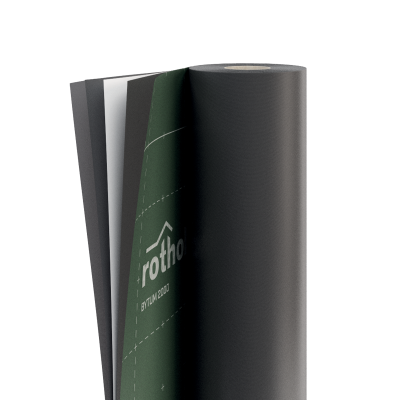BYTUM 2000
The BYTUM 2000 bituminous underlay control layer is the strongest of the bituminous membranes in the Rothoblaas range. It guarantees exceptional mechanical strength and excellent durability over time, thanks to its high mass per unit area.
Description
BYTUM 2000, the bituminous underlay control layer that ensures professional waterproofing.
This bituminous underlay control layer is designed for installation on the outer side of the roof. It can also be used as a vapour barrier, especially on very uneven surfaces such as concrete floors.
Documents
-
Technical data sheets
- Technical data sheets Croatian
- Technical data sheets Czech
- Technical data sheets English
- Technical data sheets French
- Technical data sheets German
- Technical data sheets Greek
- Technical data sheets Hungarian
- Technical data sheets Italian
- Technical data sheets Polish
- Technical data sheets Portuguese
- Technical data sheets Romanian
- Technical data sheets Russian
- Technical data sheets Slovene
- Technical data sheets Spanish
-
Recommendations for installation
- Recommendations for installation Chinese
- Recommendations for installation Czech
- Recommendations for installation Dutch
- Recommendations for installation English
- Recommendations for installation French
- Recommendations for installation German
- Recommendations for installation Greek
- Recommendations for installation Hungarian
- Recommendations for installation Italian
- Recommendations for installation Japanese
- Recommendations for installation Korean
- Recommendations for installation Polish
- Recommendations for installation Portuguese
- Recommendations for installation Romanian
- Recommendations for installation Russian
- Recommendations for installation Slovene
- Recommendations for installation Spanish
Technical Data
| Property | Standard | Tested Values | USC Conversion |
|---|---|---|---|
| Mass per unit area | EN 1849-1 | 2000 g/m² | 6.55 oz/ft² |
| Thickness | EN 1849-2 | 1,8 mm | 71 mil |
| Water vapour transmission (Sd) | EN 1931 | 120 m | 0.029 US perm |
| Tensile strength MD/CD | EN 12311-1 | 500 / 400 N/50mm | 57 / 46 lbf/in |
| Elongation MD/CD | EN 12311-1 | 40 / 40 % | - |
| Resistance to nail tearing MD/CD | EN 12310-1 | 150 / 200 N | 34 / 45 lbf |
| Watertightness | EN 1928 | compliant | - |
| Resistance to temperature | - | -20 / 100 °C | -4 / 212 °F |
| Reaction to fire | EN 13501-1 | class E | - |
| Resistance to penetration of air | EN 12114 | < 0,02 m³/(m²·h·50Pa) | < 0.001 cfm/ft² at 50Pa |
| Thermal conductivity (λ) | - | 0,2 W/(m·K) | 0.12 BTU/(h·ft·°F) |
| Specific heat | - | 175 J/(kg·K) | - |
| Density | - | ca. 1300 kg/m³ | - |
| Water vapour resistance factor (μ) | - | ca. 20000 | - |
| UV stability (1 ) | - | 336h (3 months) | - |
| Exposure to weather | - | 3 weeks | - |
| Watertightness after artificial ageing | EN 1297 / EN 1928 | compliant | - |
| After artificial ageing - Tensile strength MD/CD | EN 1297 / EN 12311-1 | 400 / 300 N/50mm | 46 / 34 lb/in |
| After artificial ageing - elongation | EN 1297 / EN 12311-1 | 35 / 35 % | - |
| Flexibility at low temperatures | EN 1109 | - | - |
| Flexibility at low temperatures | EN 1109 | - | - |
Composition
| TOP LAYER | non-woven PP fabric |
|---|---|
| compound | bituminous mixture |
| REINFORCING LAYER | PL fabric |
| compound | bituminous mixture |
| BOTTOM LAYER | non-woven PP fabric |
Specifications
BYTUM 2000
Supply and installation of bituminous underlay membrane for roof tiles, type BYTUM 2000.
Composition
From top layer to bottom layer:
-
non-woven PP fabric;
-
bituminous mixture;
-
PL fabric;
-
bituminous mixture;
-
non-woven PP fabric.
Properties
-
Mass per unit area [g/m²]: 2000
-
Thickness [mm]: 1,8
-
Water vapour transmission (Sd)[m]: 120
-
Tensile strength MD/CD [N/50 mm]: 500/400
-
Elongation MD/CD [%]: 40/40
-
Resistance to nail tearing MD/CD [N]: 150/200
-
Watertightness (60 kPa): comply with (EN 1928)
-
Resistance to temperature [C°]: -20/100
-
Reaction to fire: class E (EN 13501-1)
-
UV stability: 336h (3 months)
-
Storage temperature [°C]: +5/+40
Standards and certifications
-
CE marked in accordance with EN 13859-1, EN 13707
-
AUS 4200.1 Class 1
Description
The application surface must be dry, free of dust and grease. Surface elements must be removed so that the membrane is not damaged during application.
Recommended use: The membrane is designed for applications on the exterior side of the roof.
It can also be used as a vapour control membrane on uneven surfaces such as concrete floors.
Installation: Unroll the membrane and fasten each layer to the substrate using a mechanical fastener to ensure installation stability.
Proceed by sealing using tape such as: FLEXY BAND, FLEXY BAND UV, SPEEDY BAND, or EASY BAND.




